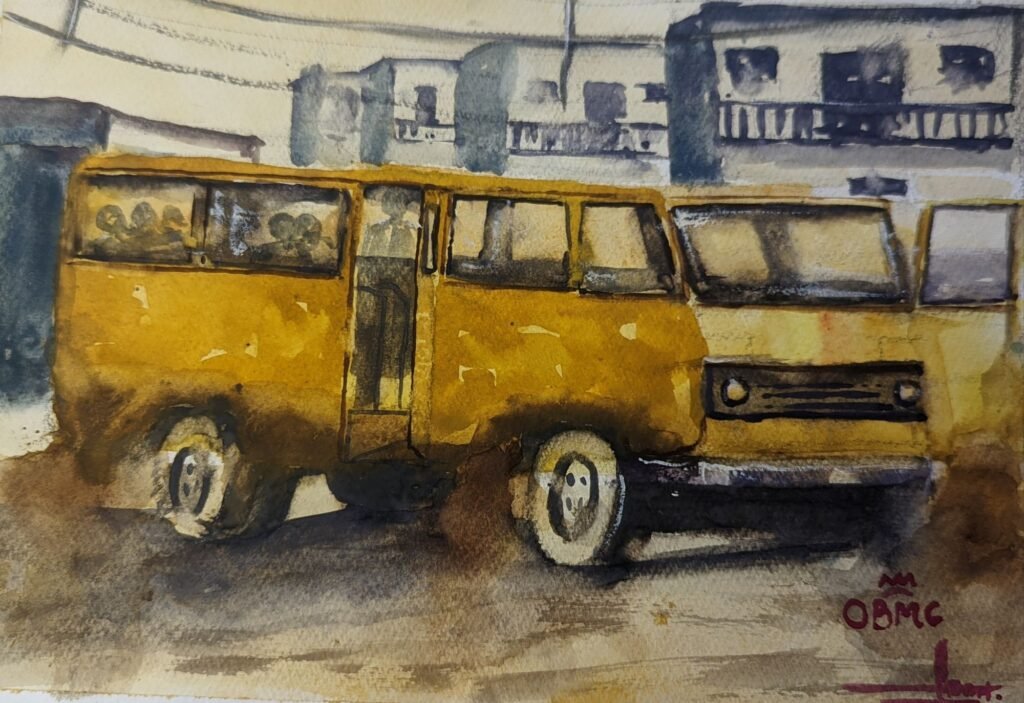
In the chaotic, vibrant streets of Lagos, Nigeria, one icon stands out amid the hustle and bustle: the Danfo bus. Painted in their unmistakable yellow-and-black livery, these minibuses are more than just a mode of transport—they’re a cultural institution, a symbol of resilience, and a mobile snapshot of Lagosian life. But where did these ubiquitous vehicles come from, and how did they become the lifeblood of Nigeria’s largest city? Let’s take a ride through the history of the Danfo, tracing its origins and the story of how it started.
The Birth of the Danfo: A German Import Finds a Nigerian Home
The Danfo’s story begins not in Nigeria, but in Germany, with the Volkswagen Type 2, commonly known as the Kombi or Transporter. Introduced in the 1950s, the Volkswagen Kombi was a boxy, reliable van designed for utility. By the 1960s, these vans began arriving in Lagos, a rapidly growing metropolis with a burgeoning population and a desperate need for affordable public transportation. At the time, Lagos was served by larger buses called “Molue,” which were slow to fill up and often crawled through the city’s narrow streets, frustrating commuters.
The Kombi, with its compact size and capacity for about 12 passengers, offered a solution. Lagosians quickly dubbed it the “Kiakia Bus” (Yoruba for “Quick Bus”) because it filled up faster and navigated the city’s congested roads with greater agility than the Molue. This marked the Danfo’s precursor phase, setting the stage for its rise. The exact date of the first Kombi’s arrival is hard to pin down, but sources suggest they became noticeable in Lagos by the mid-1960s, during Nigeria’s post-independence economic boom.
From Kiakia to Danfo: The Evolution in the 1980s
The name “Danfo” emerged in the 1980s, coinciding with the introduction of the Volkswagen T3 (third-generation Transporter), produced between 1979 and 2002. The T3, known as the Vanagon in the U.S. and Kombi in Australia, was sturdier and better suited to Lagos’s rough roads. Drivers modified these vans to maximize profit, squeezing in up to 14–18 passengers by rearranging seats and even cramming two people into the front passenger seat when traffic officials weren’t watching. This ingenuity cemented the T3 as the definitive Danfo, and the name stuck.
Why “Danfo”? The origin of the term is murky, possibly derived from a Yoruba phrase or a playful nickname reflecting the bus’s speed and hustle. By the 1980s, Danfo buses had overtaken the Molue to become Lagos’s primary commercial transport, with an estimated 75,000 operating in the city by 2020. Their affordability—fares as low as N50 ($0.12 USD) for some routes—and accessibility made them indispensable for the city’s middle and lower classes.
A Cultural Icon Takes Root
The Danfo’s rise wasn’t just about transportation; it was about survival and adaptation in a city where formal systems often lagged behind demand. Operated by a driver and a conductor (usually male due to the rough-and-tumble nature of the job), Danfos became a microcosm of Lagos’s social dynamics. Conductors shouted destinations at bus stops, passengers haggled over fares, and drivers navigated traffic with a mix of skill and audacity. The buses’ rickety state and crowded cabins belied their importance as a lifeline for millions.
Danfos also became canvases for Lagos’s culture. Adorned with religious slogans like “No King as God” or “Blood of Jesus,” witty phrases, and vibrant graffiti, each bus told a story of its driver’s faith, humor, or hustle. These decorations weren’t just aesthetic—they helped commuters identify buses in the chaotic rush of places like Oshodi or Mushin. The Danfo’s cultural footprint grew further through art, music (remember the duo Danfo Drivers?), and literature, inspiring everything from roadside murals to global gallery exhibitions.
Challenges and Resilience
Despite their popularity, Danfos have faced criticism for their dilapidated condition, reckless driving, and role in Lagos’s disorganized transport system. Drivers often face extortion from police and local “agberos” (touts) demanding “owo omo oni le” (money for the children of the land), a practice that reflects Nigeria’s broader corruption challenges. Health risks like hypertension and accidents are common for drivers, yet the Danfo endures, a testament to the resilience of both the vehicle and its operators.
Successive Lagos governors, including Akinwunmi Ambode in 2017, have tried to phase out Danfos in favor of modern buses like the BRT system, citing their chaotic image as unfit for a megacity. Yet, these plans have faltered. With a population of over 21 million and growing, Lagos relies on the Danfo’s ability to ply inner streets and connect far-flung routes where larger buses can’t go. The Danfo’s low cost and ubiquity keep it king, even as the government introduces air-conditioned alternatives.
The Danfo Today: A Symbol of Lagos’s Spirit
As of 2025, the Danfo remains a fixture in Lagos, its yellow silhouette weaving through traffic jams and narrow alleys. It’s a paradox: a dilapidated yet vital part of a city striving for global status. For Lagosians, the Danfo is a love-hate relationship—a “cocktail of sadness and joy,” as one editorial put it. It’s where commuters trade gossip, argue about politics, or pray for a safe journey. It’s where the city’s hustle, humor, and heart converge.
The Danfo’s story, from its 1960s roots as the Kiakia Bus to its 1980s transformation into the Volkswagen T3-powered icon, is one of adaptation and endurance. It reflects Lagos’s unyielding spirit, where necessity breeds innovation, and even an old German van can become a cultural juggernaut. So, the next time you board a Danfo, hold your change tight, plug in your earphones, and soak in the chaos—it’s not just a ride; it’s a piece of Lagos history.
0 Comments